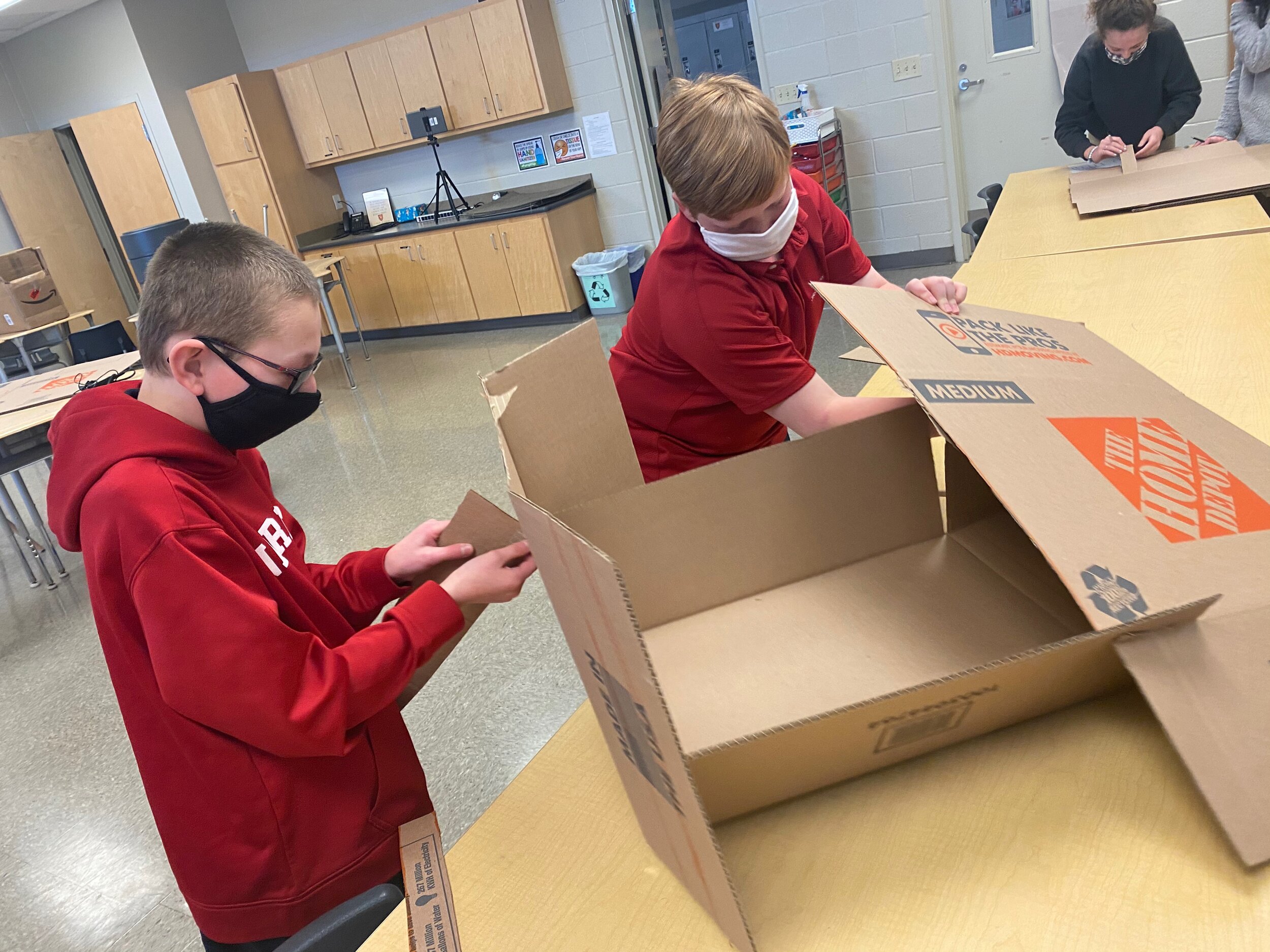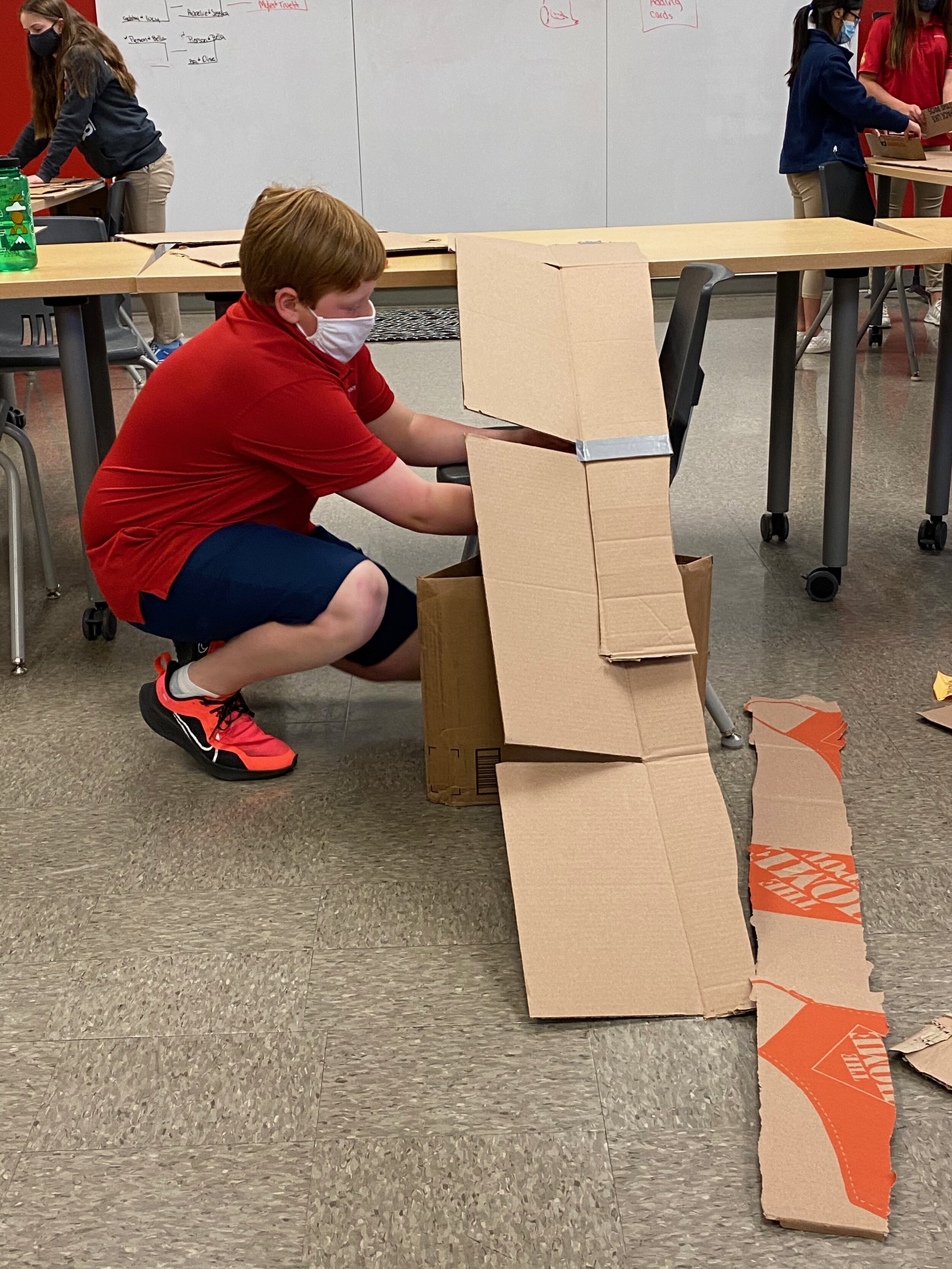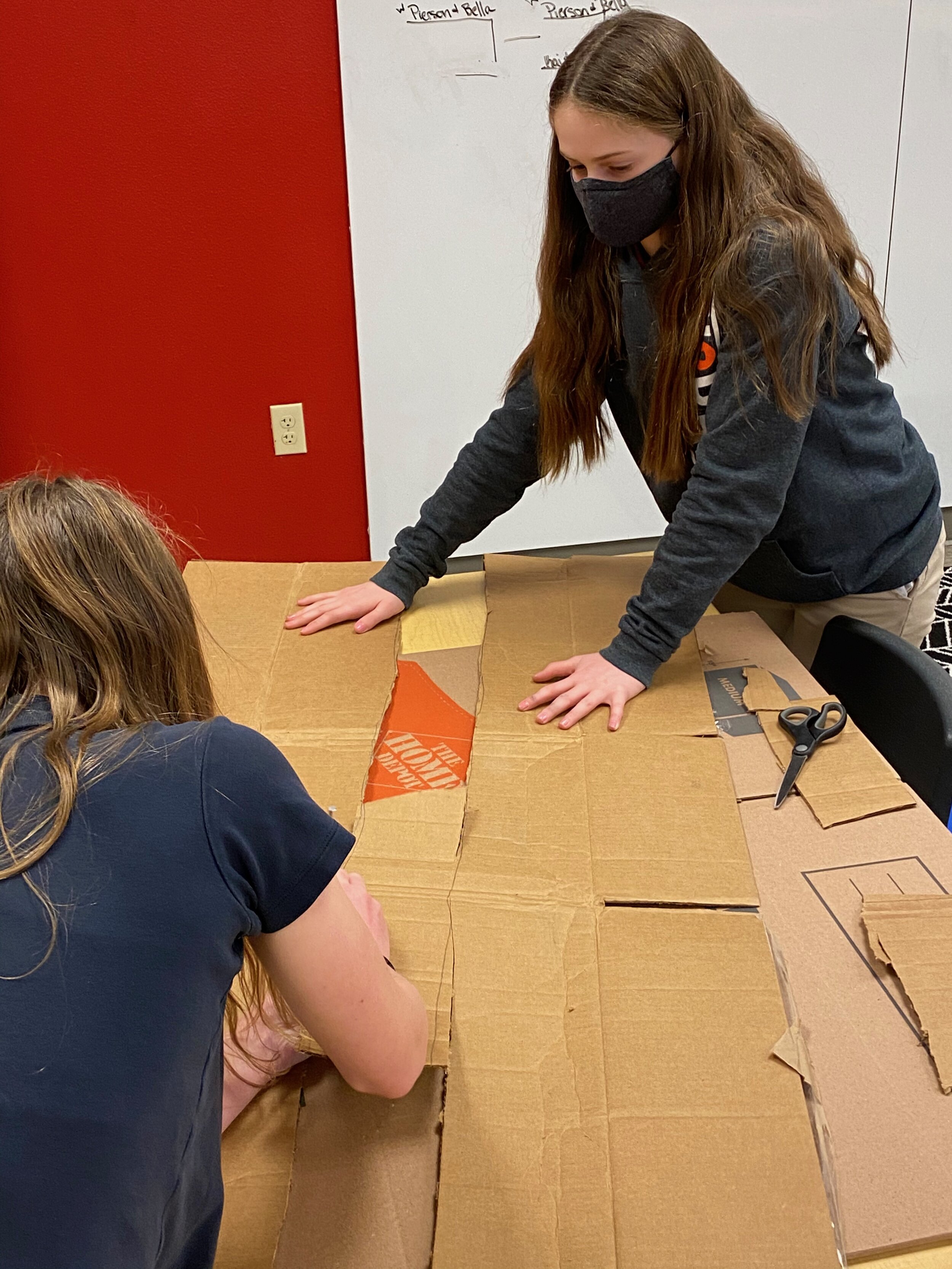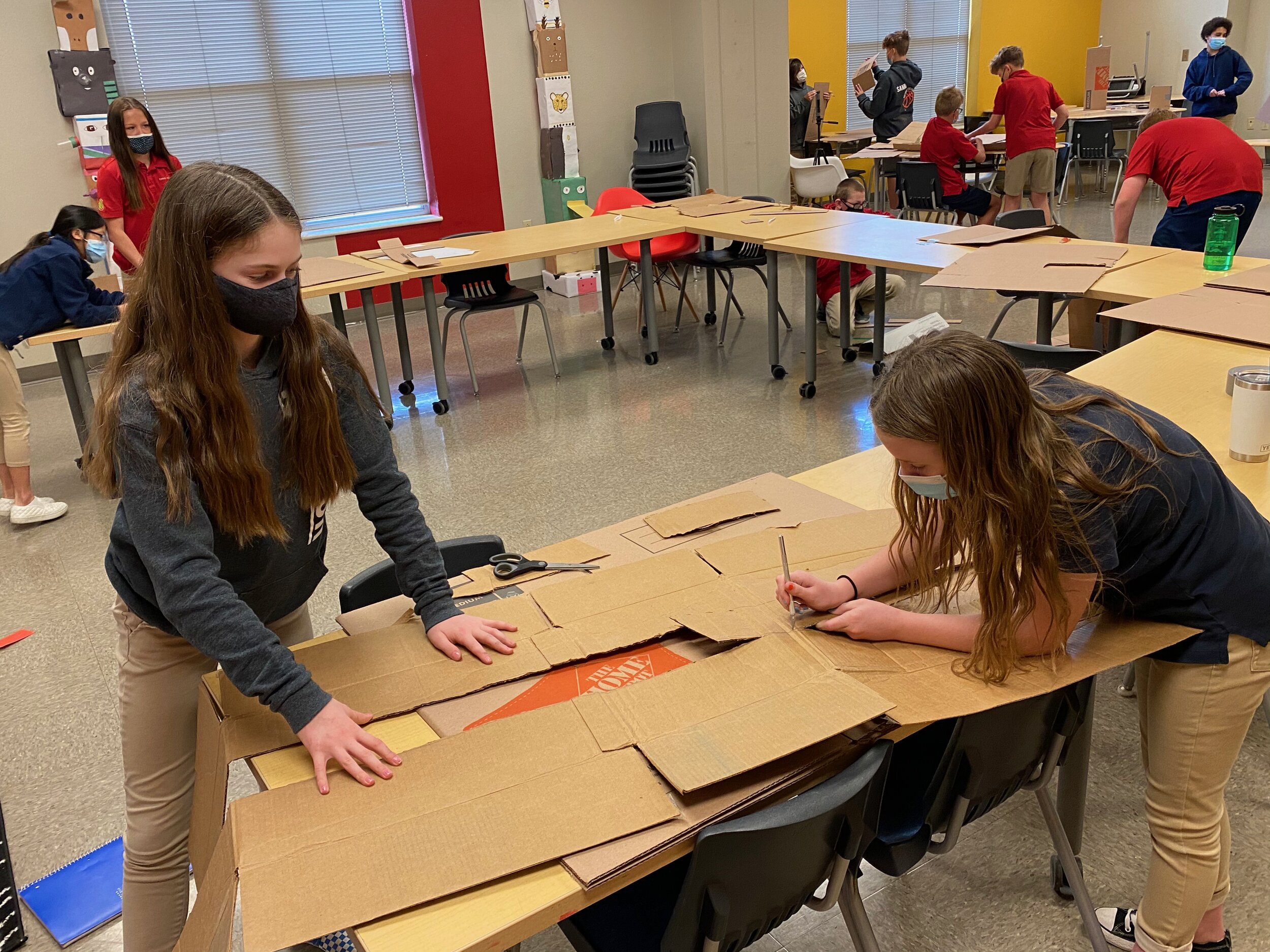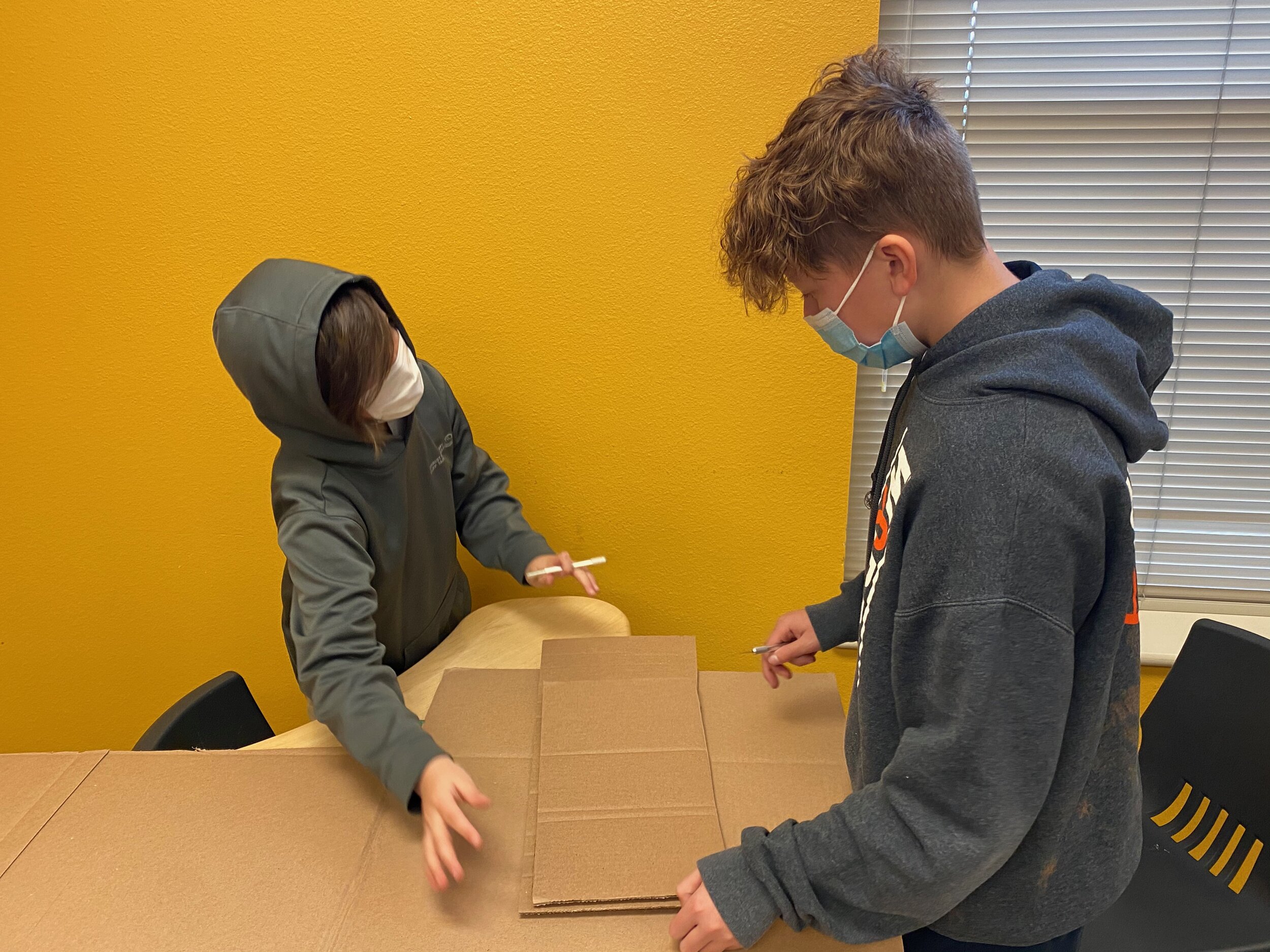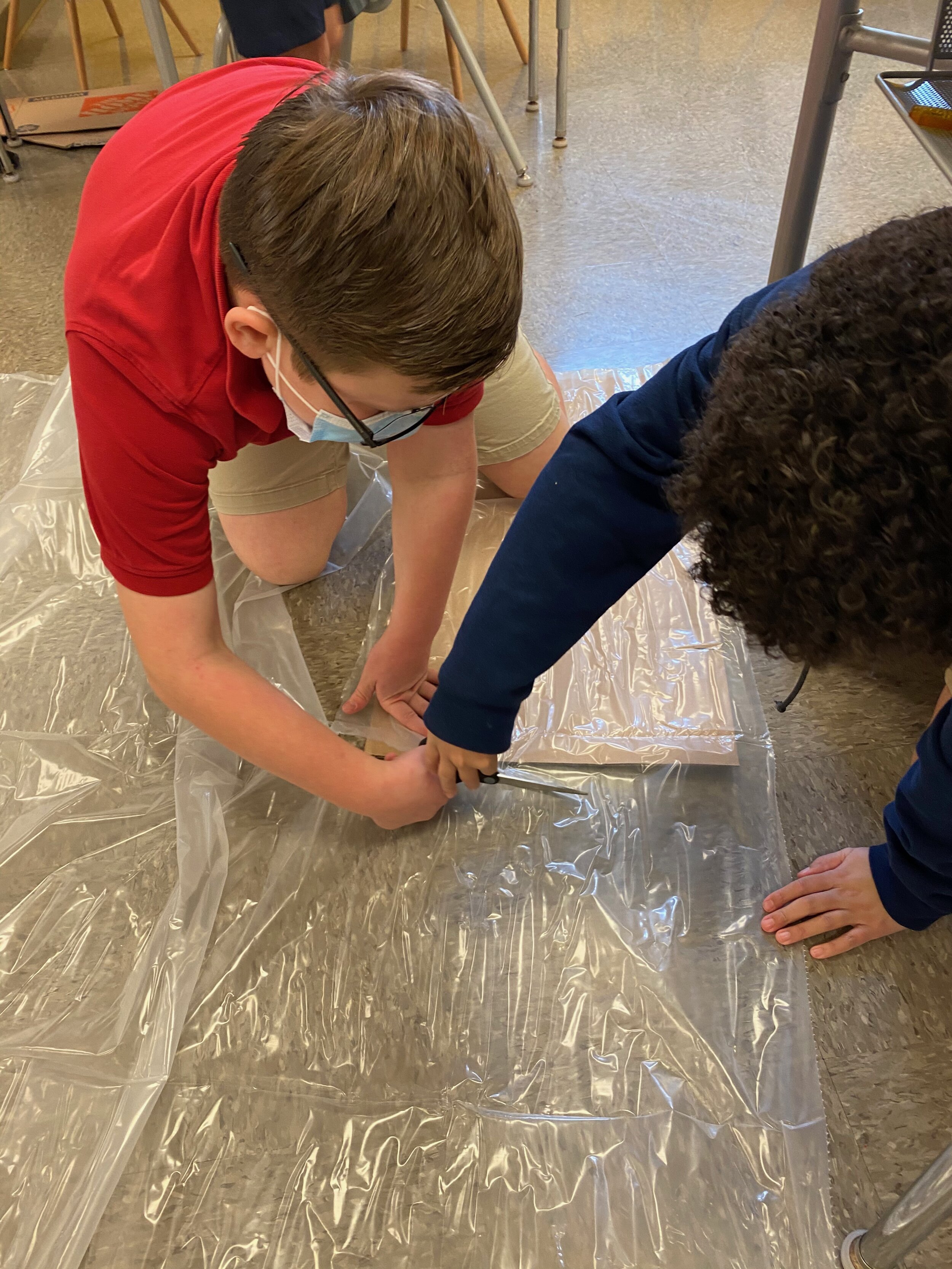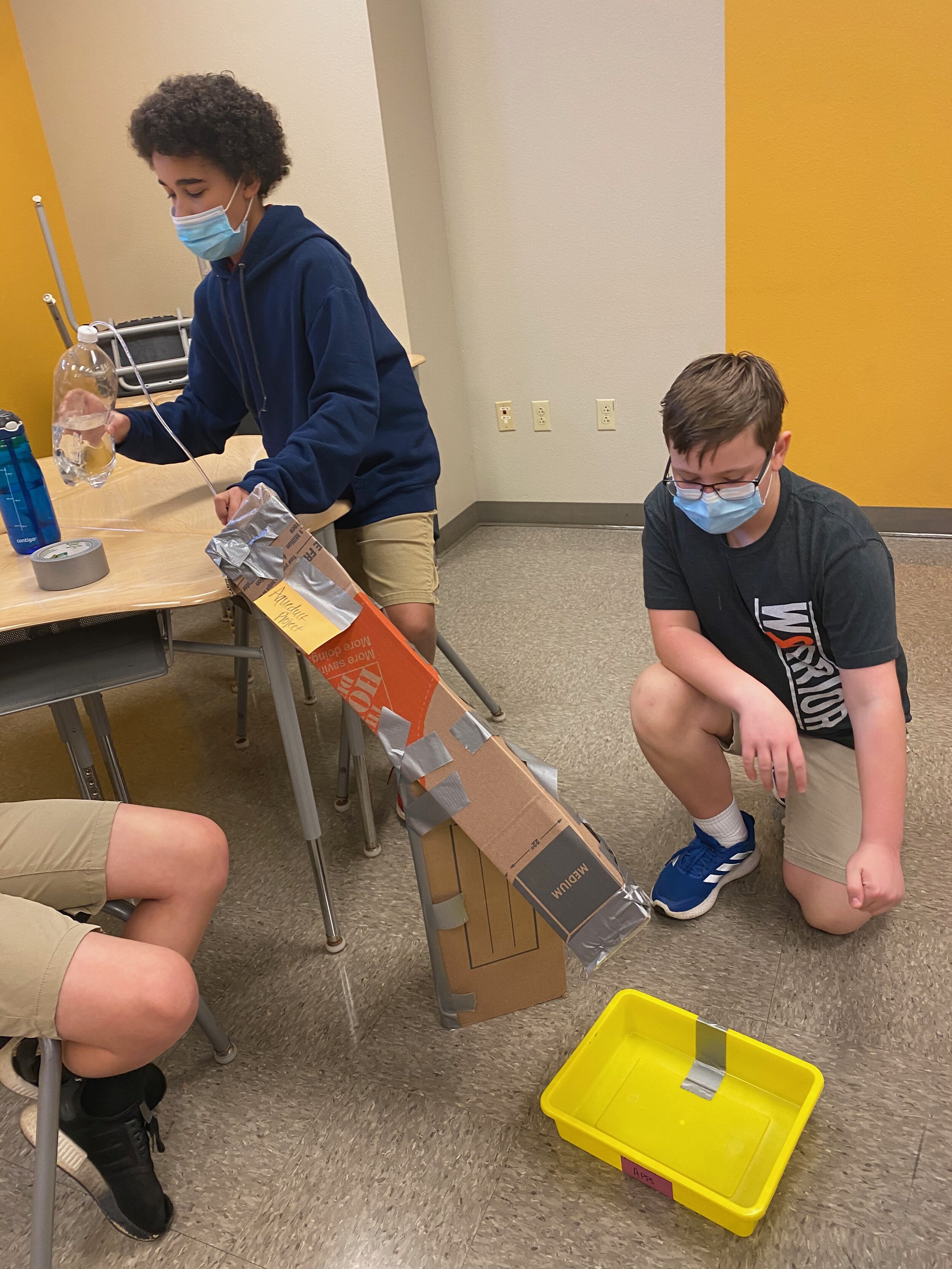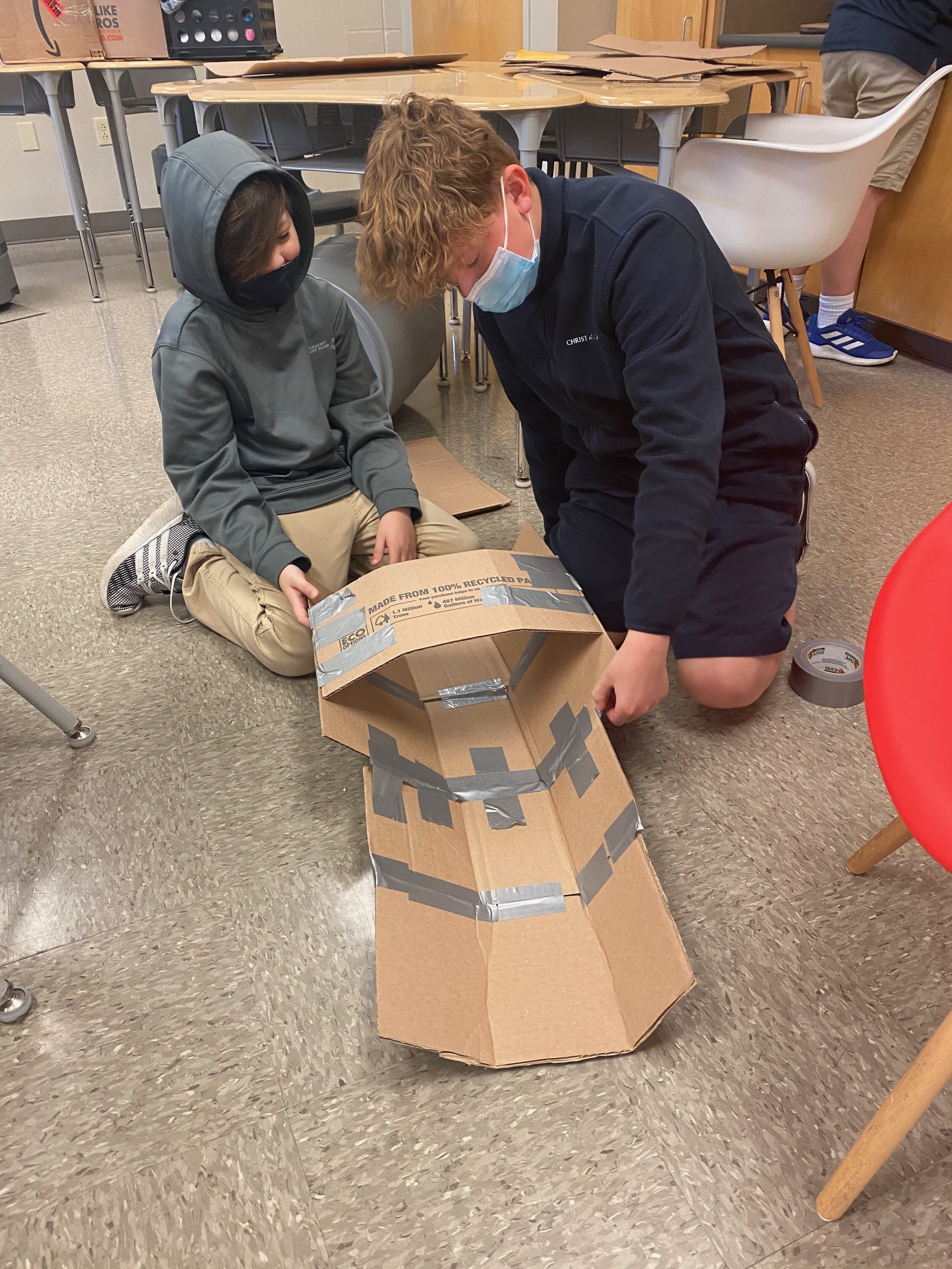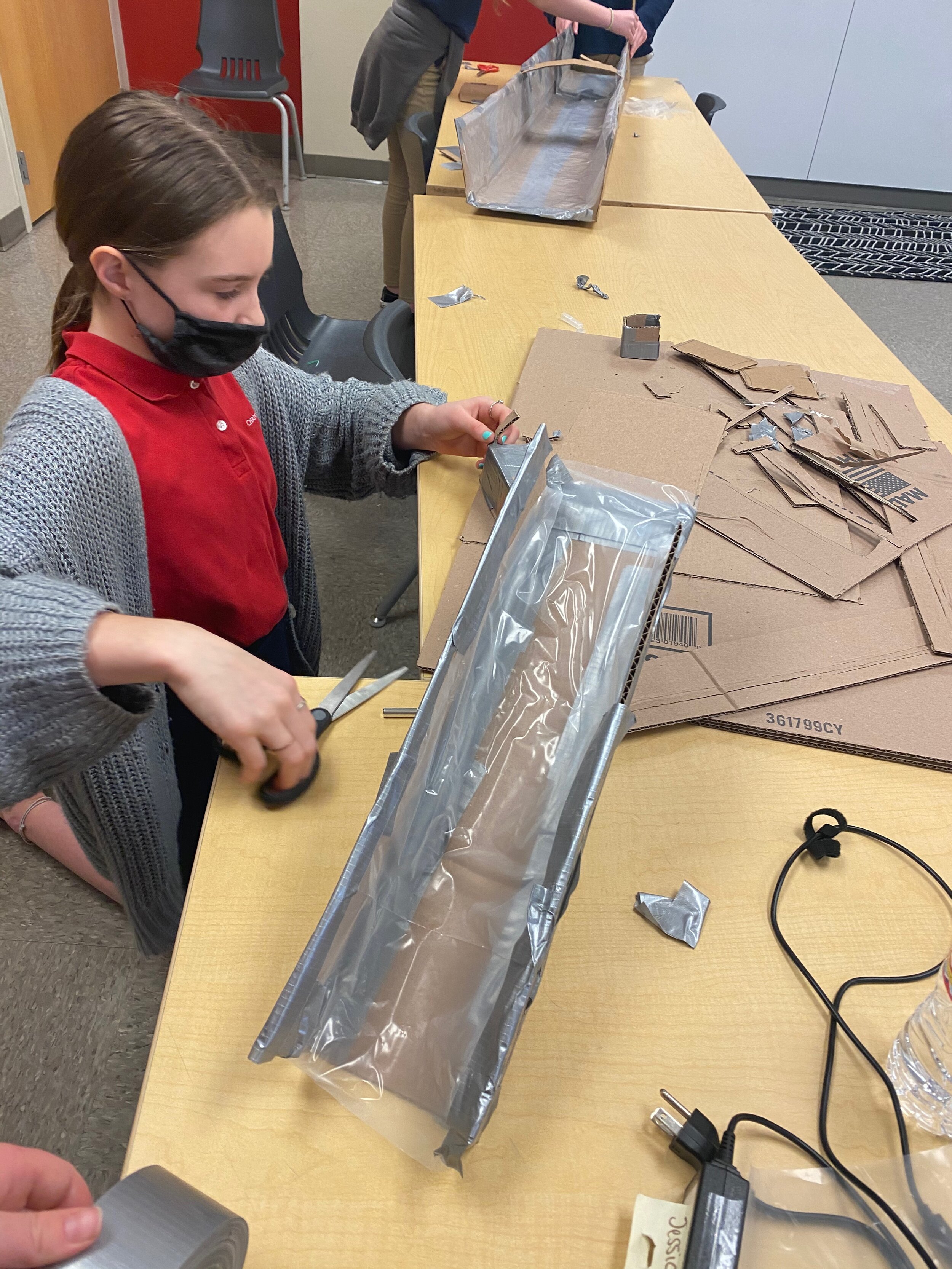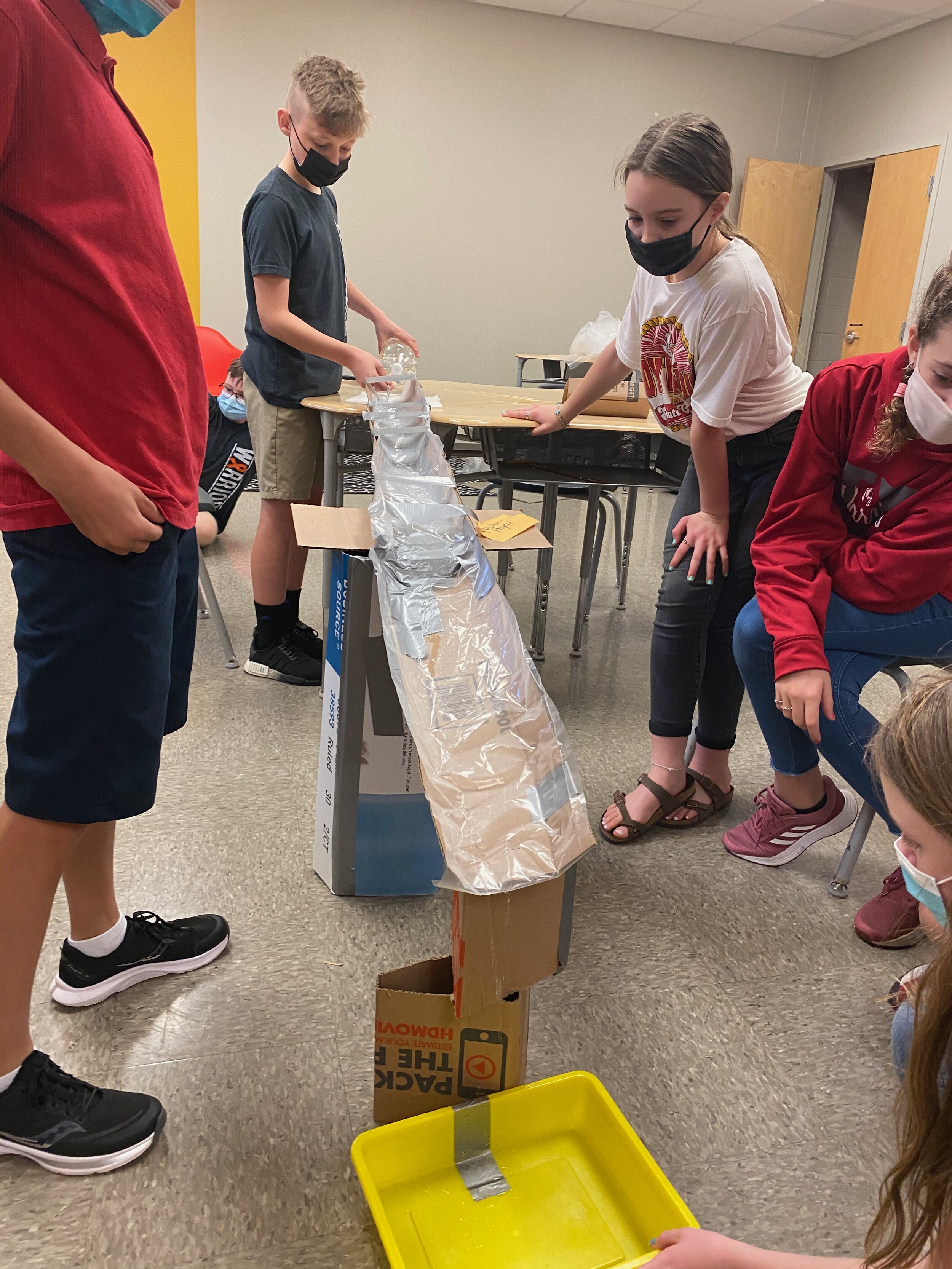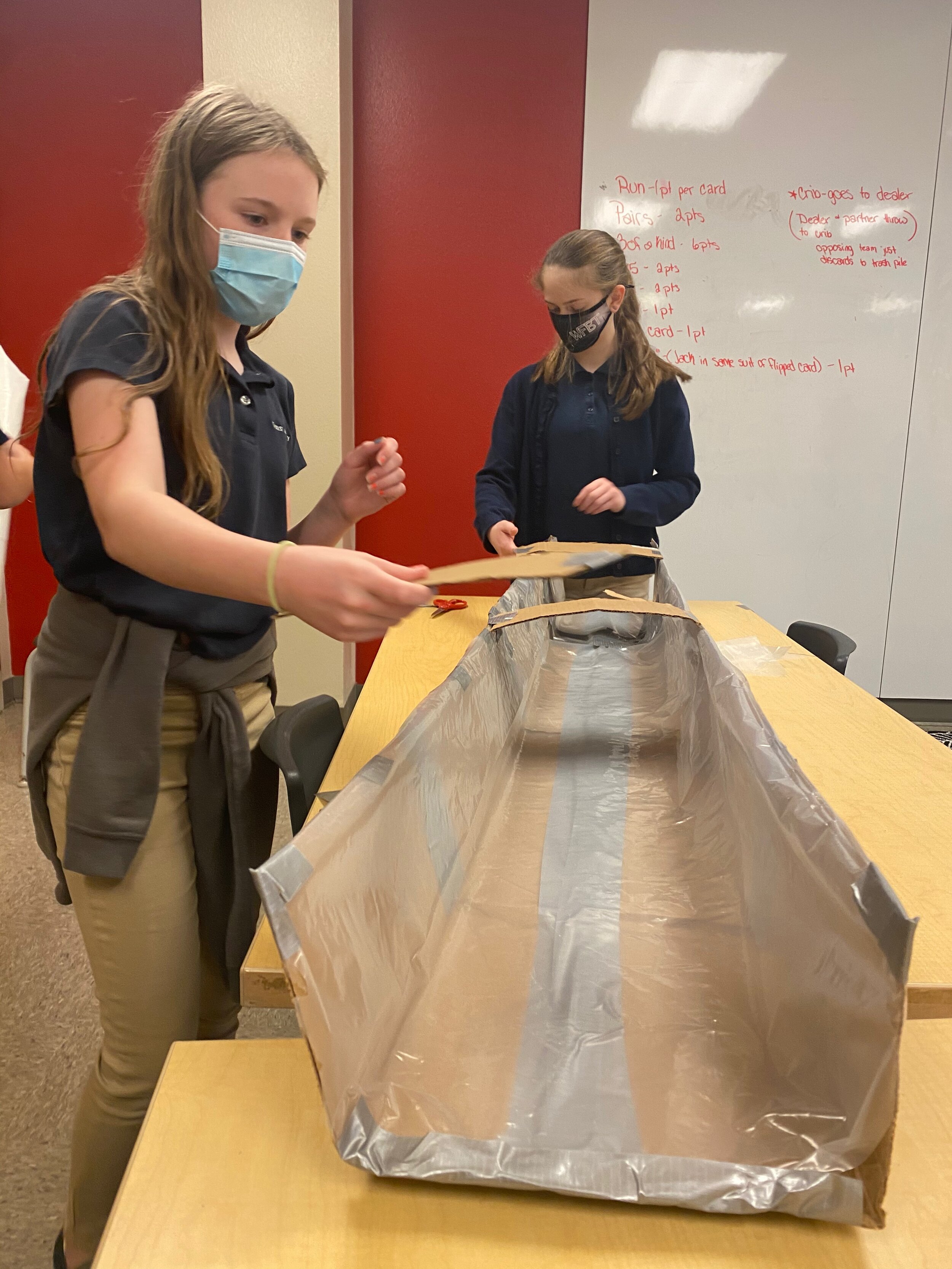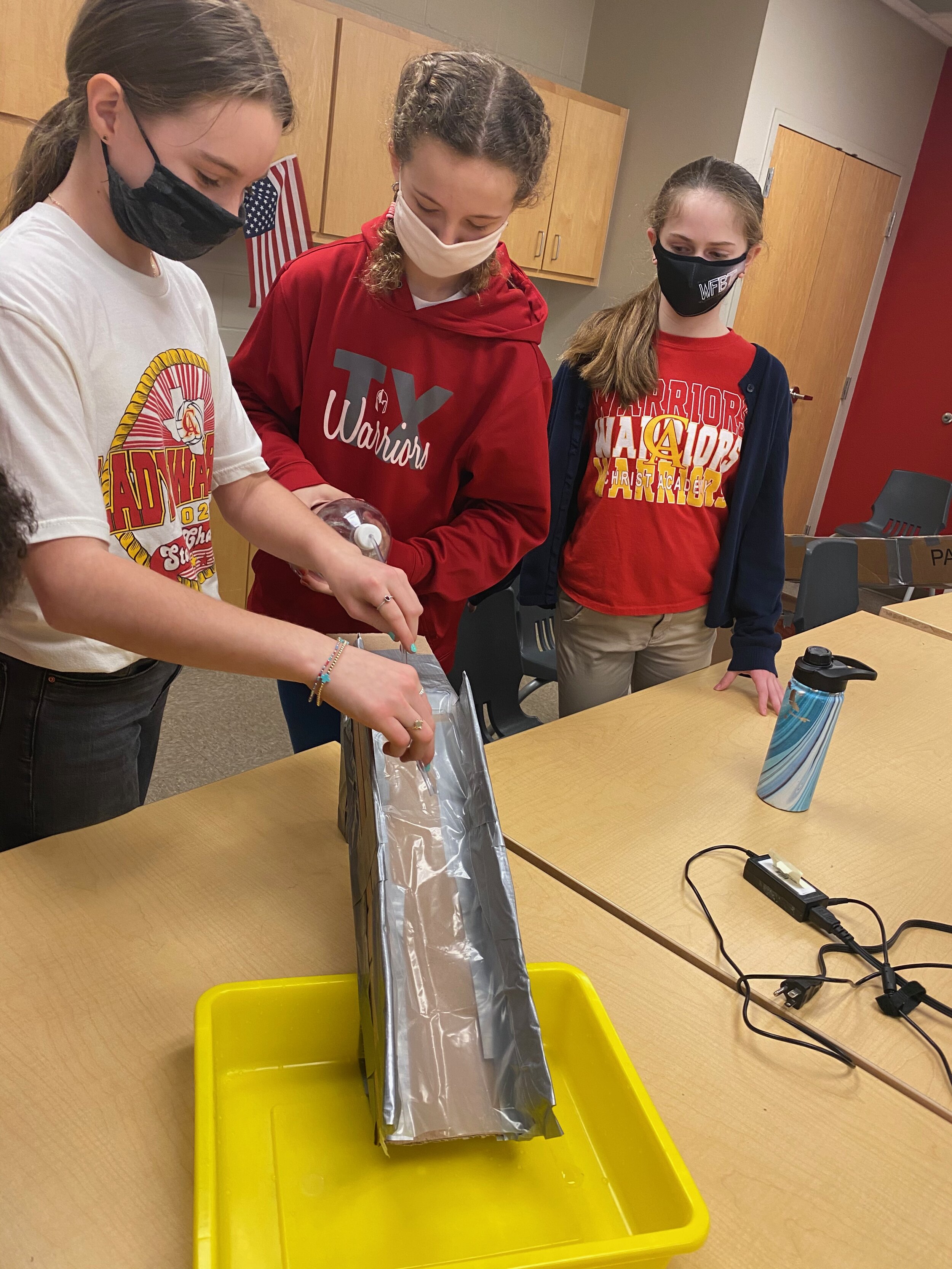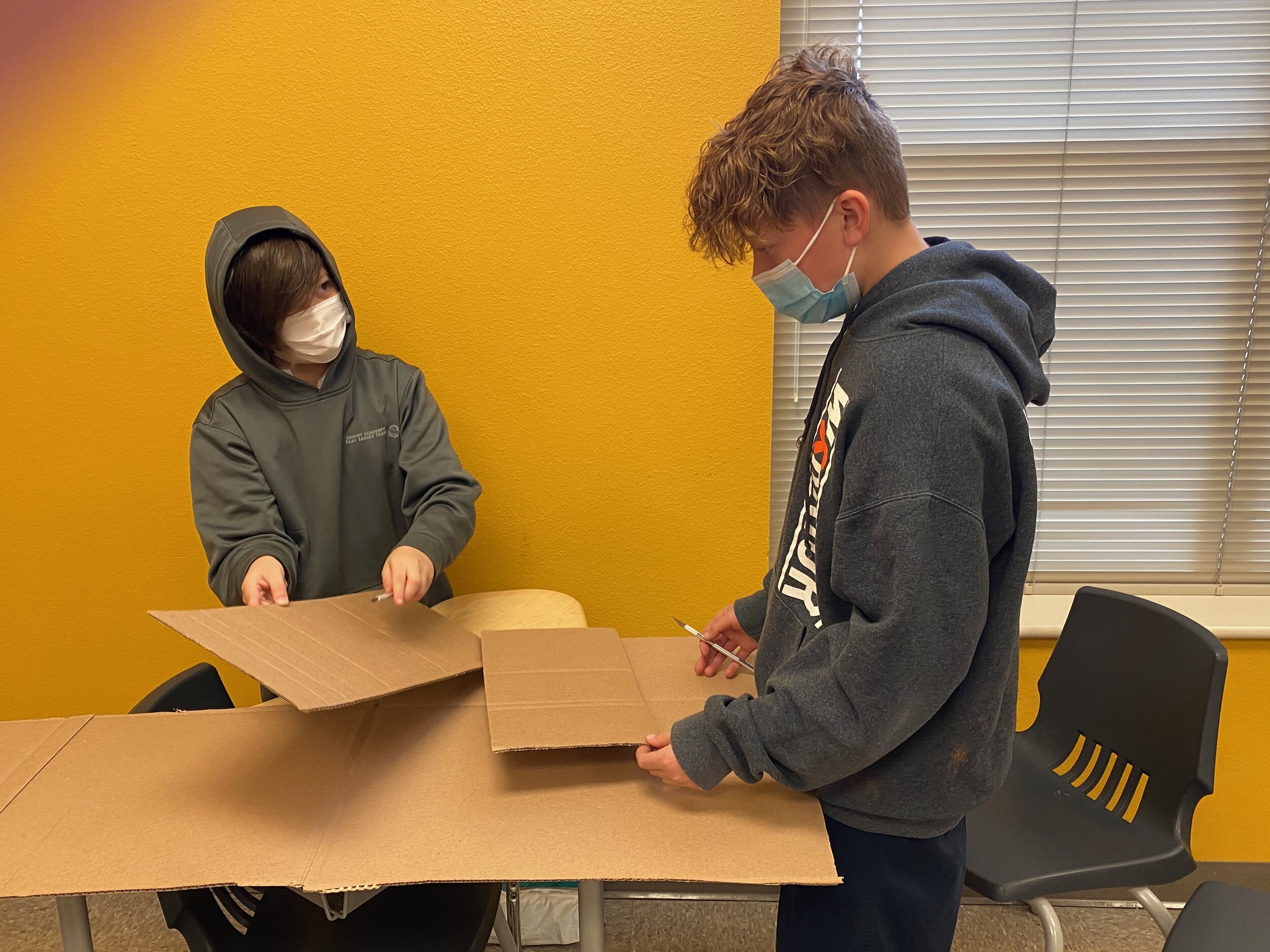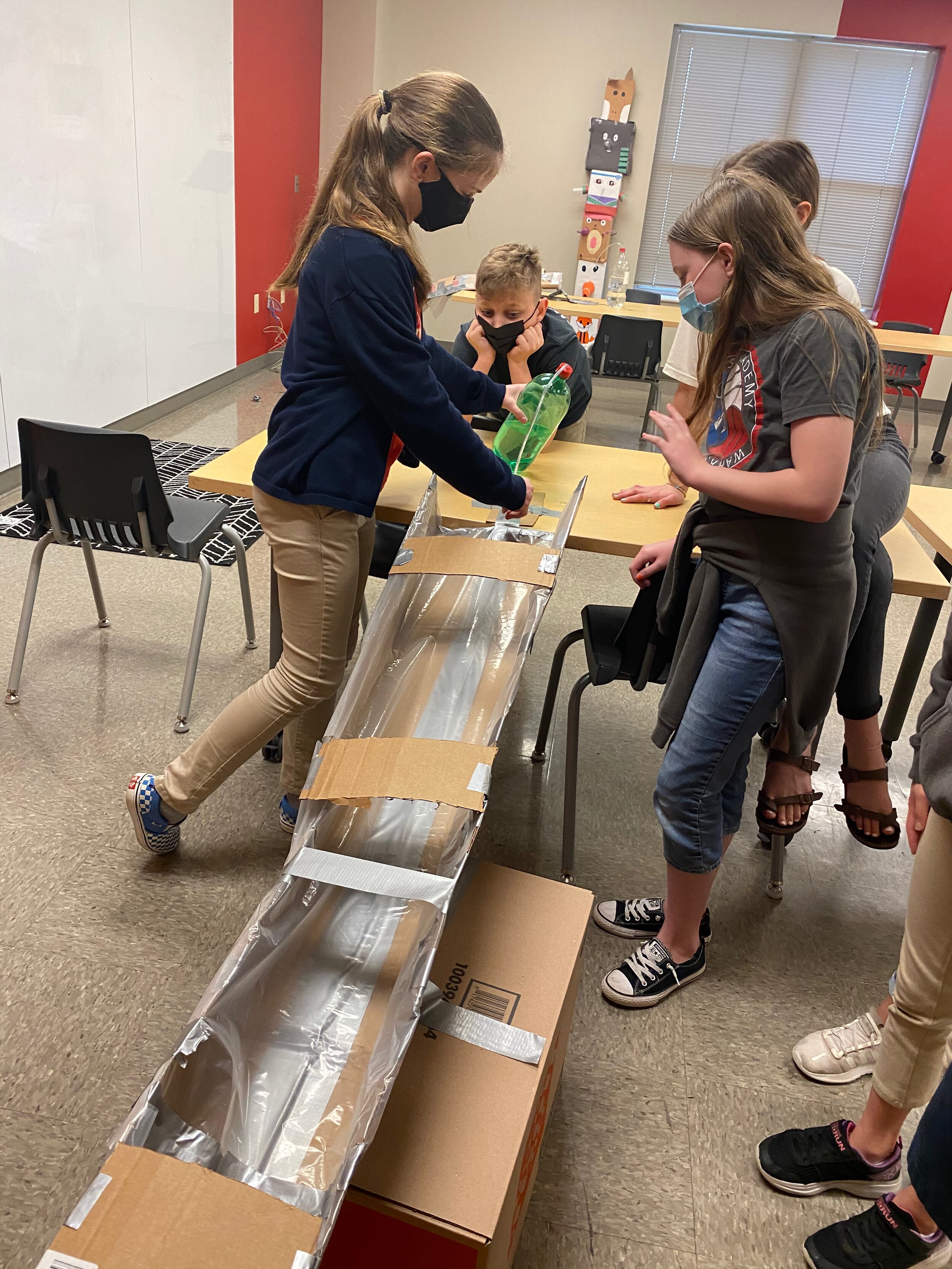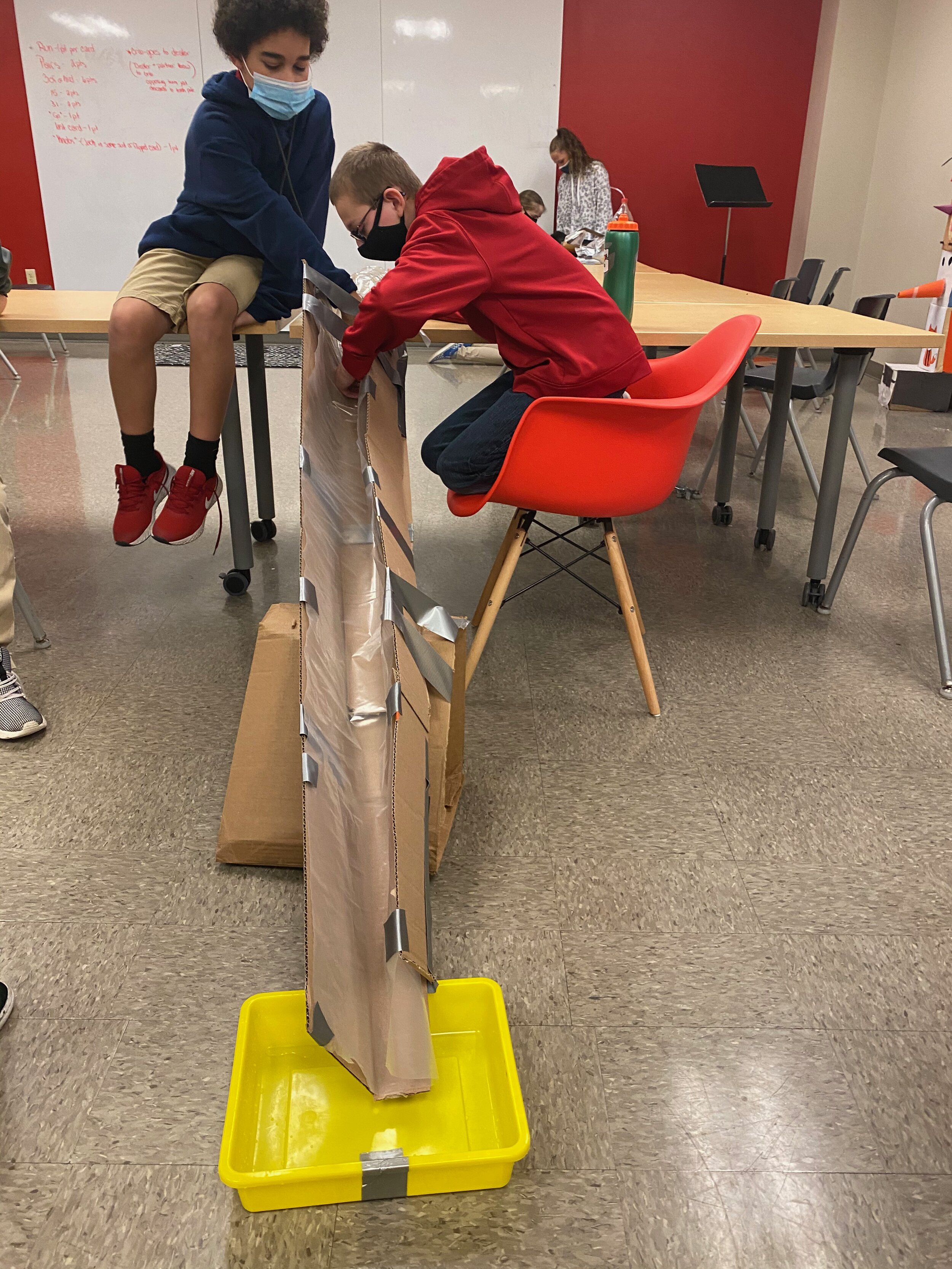Spotlight | Junior High Aqueducts
Research + Produce + Present
After studying about the ancient Greeks and Romans, Junior High students compared/contrasted the two civilizations and determined that the Greeks had a huge impact on the arts and sciences, but the Romans were more innovative in their engineering skills.
Before starting the project, they watched a variety of videos which explained how and why the Romans were able to engineer roads, buildings, and aqueducts which have lasted for centuries and, in some cases, are still in use today. For example, they learned that the Romans created a durable and inexpensive form of concrete and perfected the use of the arch in architecture.
Students worked in pairs to design and build a mini aqueduct that could transport two liters of water across a short distance to an imaginary Roman city.
Mrs. Franks, Secondary History Teacher, imposed some real-world obstacles that engineers often deal with such as monetary constraints (utilizing low-cost materials while also minimizing waste), completing a project within a time limit, and collaborating with others.
The task was to create an aqueduct that provided a steady flow of water without the pressure being too great. They also had to minimize water loss. Otherwise, their “Roman citizens” would not have a sufficient water supply.
After testing the aqueducts, they also discussed what they could have improved to make the design more efficient. It’s equally important to learn from the mistakes as to celebrate the successes. As they say ‘failure is the mother of success,”’ and our brains often learn best when we make and correct errors!
“As a secondary department, we are constantly collaborating on way to provide cross-curricular activities which enrich and solidify learning for our students.
It’s very important to provide students with theses types of experiences so they can develop the soft skills that 21st century learners need to develop such as problem-solving, communication, teamwork, and more.”
To learn more about our Junior High department click the button below.


